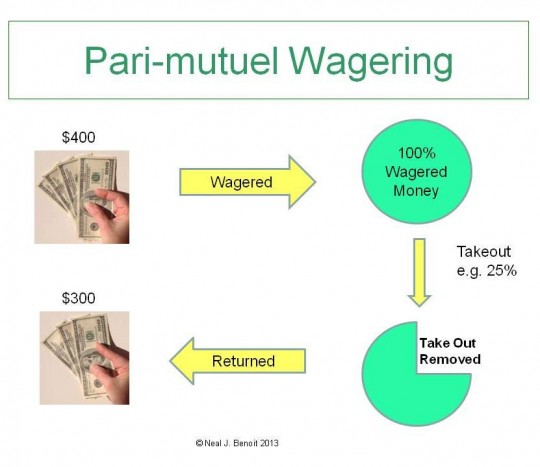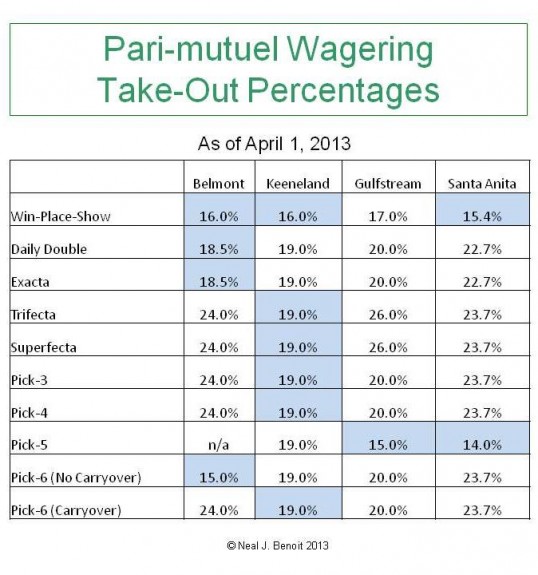Understanding Take Out Percentages in Pari-Mutuel Wagering
The system of betting that is standard throughout the horse racing world is based on pari-mutuel wagering. All money wagered is placed into a pool, a “Take-Out” is removed from the pool, and the remaining money is returned to the winning wagers. The diagram below shows an example with the assumption of a 25% Take-out percentage and a total of $400 wagered.

In the example above, for every $400 wagered by the betting public, only $300 is returned to the holders of winning tickets. So where does the other $100 go? It pays the participants in the sport; owners, trainers, public handicappers, tellers, bathroom attendants, and of course the tax-man. Additionally, there are operational costs and overhead for the maintenance of the track facilities.
Take-out varies by the type of bet and the racetrack where the bet is placed. The differences can be significant, ranging from roughly 15% to 26% in the United States. Typically rates are less for “simple” wagers like Win, Place, and Show and higher for “exotic” wagers like Trifecta, Superfecta, and Pick-X races.
Now before you get too upset about the extraction of your wagering dollars from the betting pools, let’s compare it to other sports where the takeout is 100% of your admission ticket, with no chance of a positive monetary return. Whether you’re talking about the price of admission, a pint of your favorite ale, or a hot dog, the cost of attending a day at the racetrack is far less than a trip to a professional baseball, basketball, or football game.
And compared to lottery tickets, where the Take-out percentages are as much as 60%, Horse Racing takeout is a terrific bargain.
With that said, Take-out percentages are an ongoing topic of debate in the Horse Racing business. What is the proper amount to pay for the necessary costs, yet still give a regular horseplayer a fighting chance of turning a profit … and thereby keep him interested in the game?
For now, let’s look at the differing rates for a few of the major racetracks in North America. Generally you can find this information on each track’s website, but it does take a little searching.
Obviously the less money taken out, the better for the bettors. With that in mind, I’ve highlighted the best rates for each type of wager. As you can see from the chart, there is no agreed upon standard in the horse racing industry. For the infrequent visitor to the racetrack, Take-Out percentage isn’t a big concern. But if you’re looking to become a regular player, it is a topic for consideration. And one most serious horseplayers have something to say about.


3 comments on “Understanding Take Out Percentages in Pari-Mutuel Wagering”